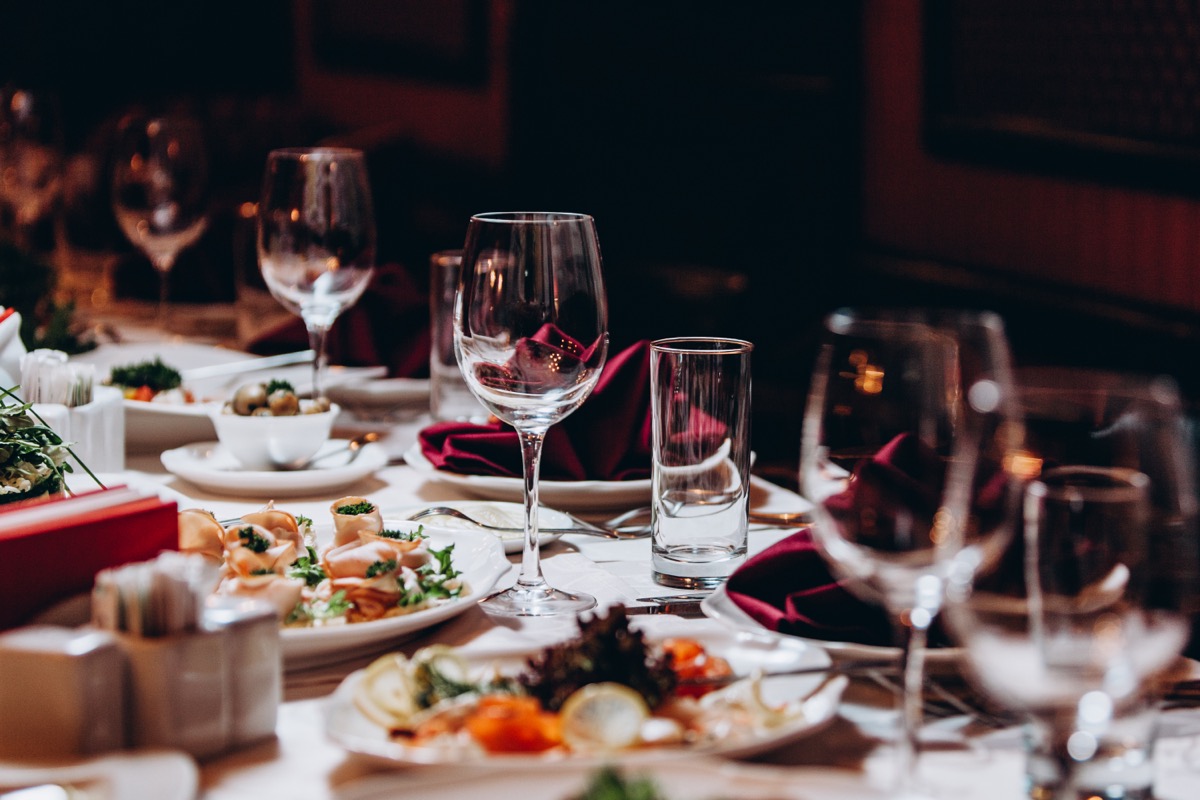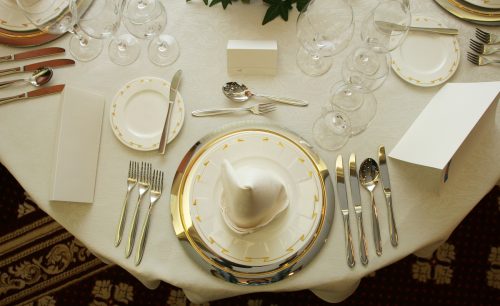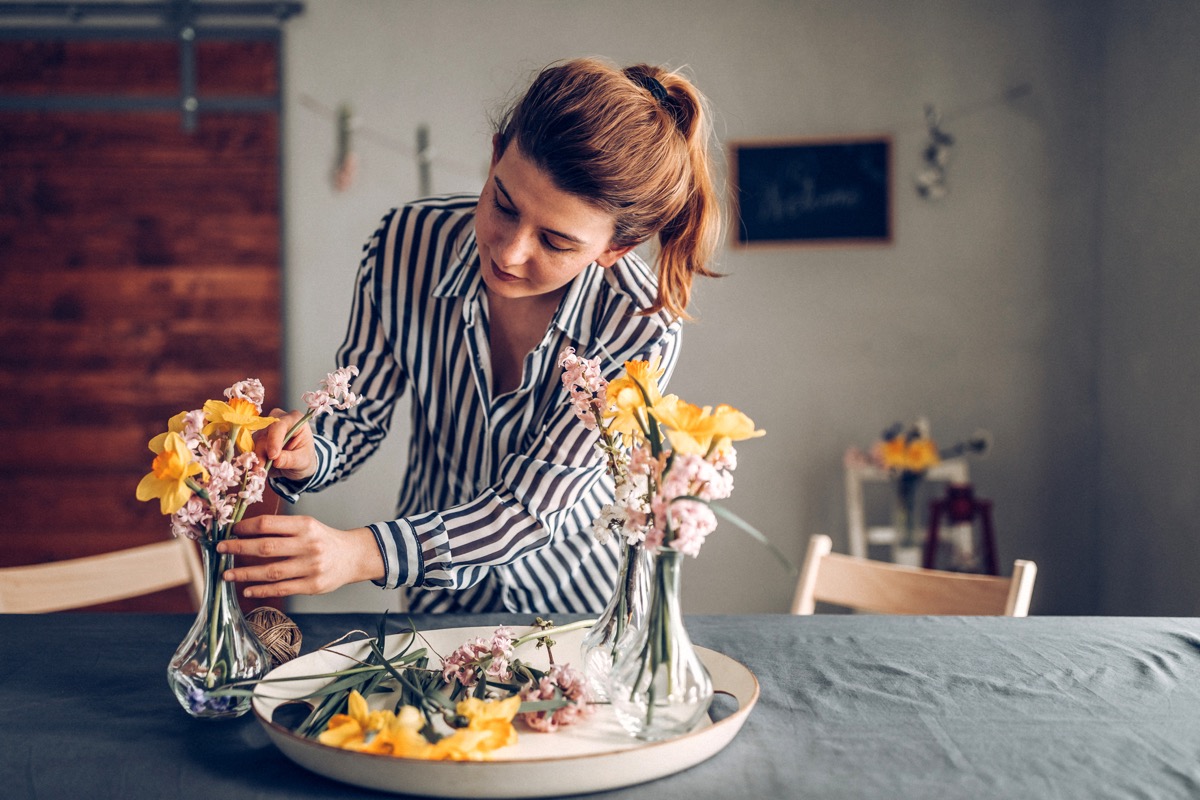5 Table Setting Rules You Can Forget, Etiquette Experts Say

Despite our collective obsession with beautiful tablescapes—long party tables filled to the brim with flowers, candlesticks, and crystal glasses—the art of setting the table is quickly being forgotten. Nowadays, you’d be hard-pressed to find a person who knows an oyster fork from a dessert fork and even less likely to locate someone who could set a formal table from memory.
In many ways, this is a welcome change: It encourages more casual get-togethers that put the emphasis on conversation versus antiquated etiquette. When it comes to your own events, that means you can skip a few old-fashioned table-setting rules. Here, etiquette experts tell us the ones that are OK to ditch—and what you can do instead. Keep reading for their best tips.
READ THIS NEXT: The 6 Best Things to Ask Guests to Bring—If They Offer.
1
“Provide a glass for every drink.”

A formal table setting could include lots of glasses. Etiquette expert Karen Thomas, founder of Karen Thomas Etiquette, says there’d typically be one for an aperitif, white wine, red wine, champagne, and water.
But if you’re hosting a more casual gathering—or even want to set a more streamlined formal table—you don’t need to include every glass in your bar cabinet.
“For a simple formal setting, one should include water and wine glasses,” says Thomas. If a champagne toast will be an essential part of your evening, add one of those, too—but it’s not necessary for many events.
2
“Invest in a flatware set with every niche piece.”

If you’ve ever been to a super fancy dinner, then you know there are extensive pieces of flatware that can be used if the evening calls for it. However, your guests probably won’t miss them—in fact, they might even be relieved to see a table with fewer items (less stress about wondering what to use when!).
“It is rare to find cheese scissors, escargot spoons, fish knives, differentiated soup spoons, and a wide variety of specialty utensils,” explains Jodi RR Smith, president and owner of Mannersmith Etiquette Consulting. “Most people in most homes make do with the standards: teaspoons, soup spoons, salad forks, dessert forks, dinner forks, dinner knives, and steak knives.”
Any more is often just clutter. You only need to lay out the items guests will need to use during the meal you plan to serve.
READ THIS NEXT: 6 Things You Should Put Away When Guests Come Over, Experts Say.
3
“Sit couples next to each other.”

There are lots of antiquated beliefs about seating charts, including the one that couples should always sit next to each other.
“Couples married a year or more can be separated,” says Smith. This means it’s probably not their first time getting together with the group, so they’ll be comfortable away from their partners.
What’s more, she adds that it’s totally fine to have an odd number of tablemates, despite what some etiquette books say. Who’s counting?!
4
“Alternate genders at the table.”

Instead of sticking to this old-fashioned advice, Smith suggests seating people with similar interests next to each other. “That will facilitate lively conversations,” she says. Be sure to tip folks off about what they have in common as they mingle during cocktail hour.
For more entertaining advice delivered straight to your inbox, sign up for our daily newsletter.
5
“Avoid tall centerpieces.”

This rule was introduced with the best intentions: If your centerpieces are too tall, some guests might find it difficult to interact over them. However, you often needn’t worry, and choosing tall centerpieces can make for truly eye-catching decor. As long as you keep things shorter than 12 inches, your guest should be able to mix and mingle, according to Ana Scholtes at QC Event School.
If you want to stay low, try a creative solution to add height to the decor. “You could switch to hanging some of it,” writes Scholtes. “Think chandeliers, draped linens or maybe even twinkle lights!” Hanging flowers above the table is another on-trend option that your guests will surely remember.